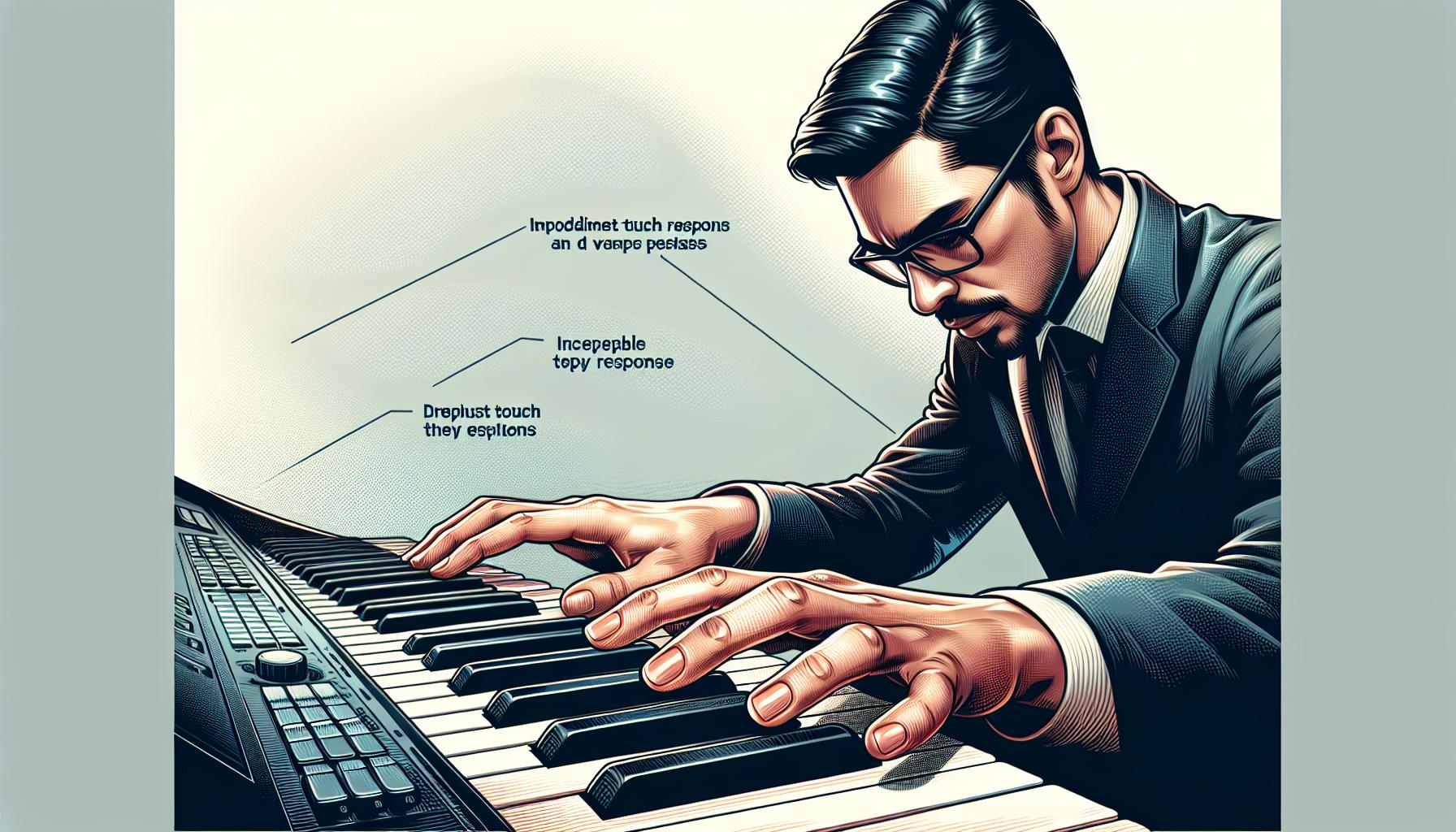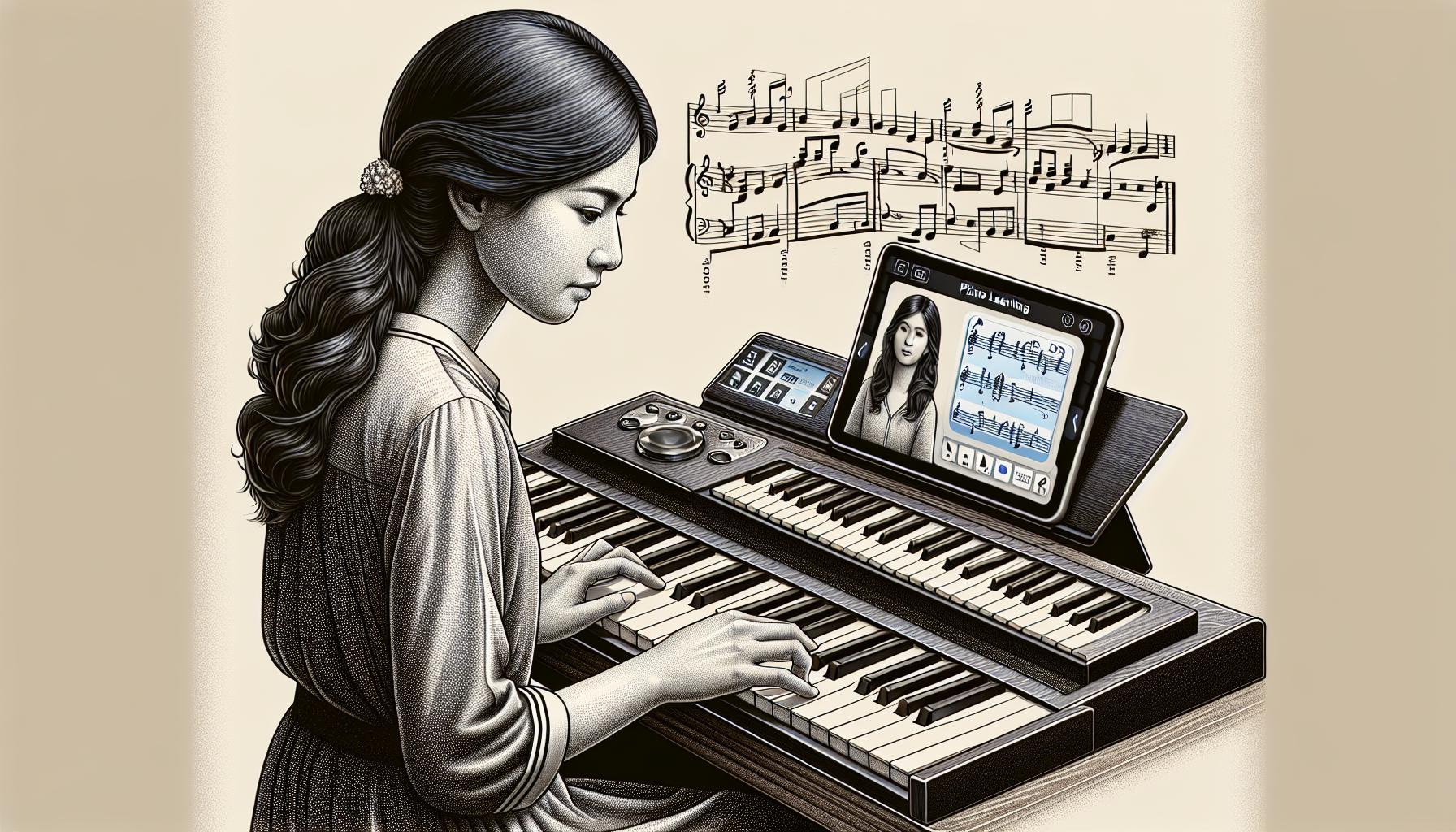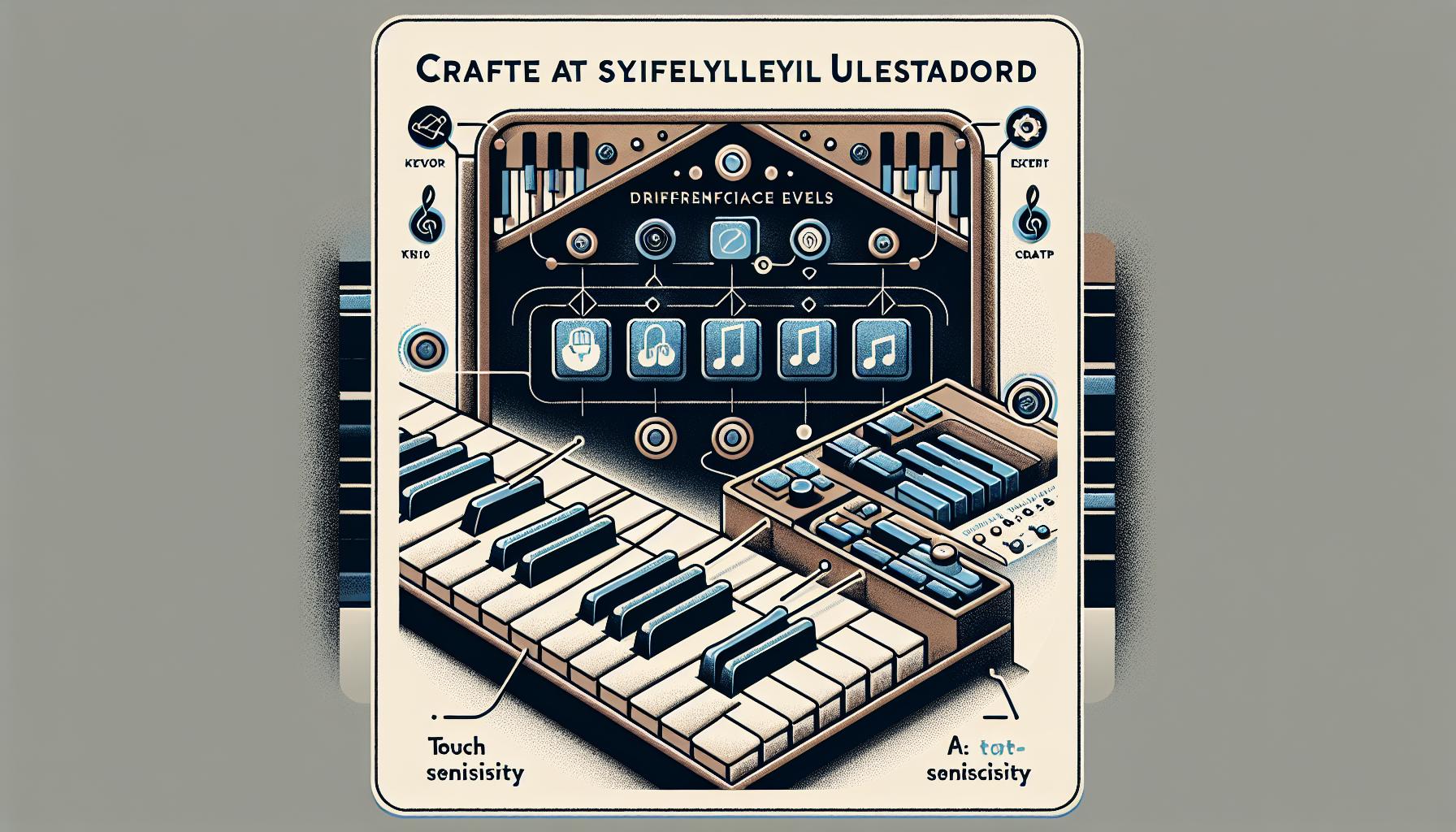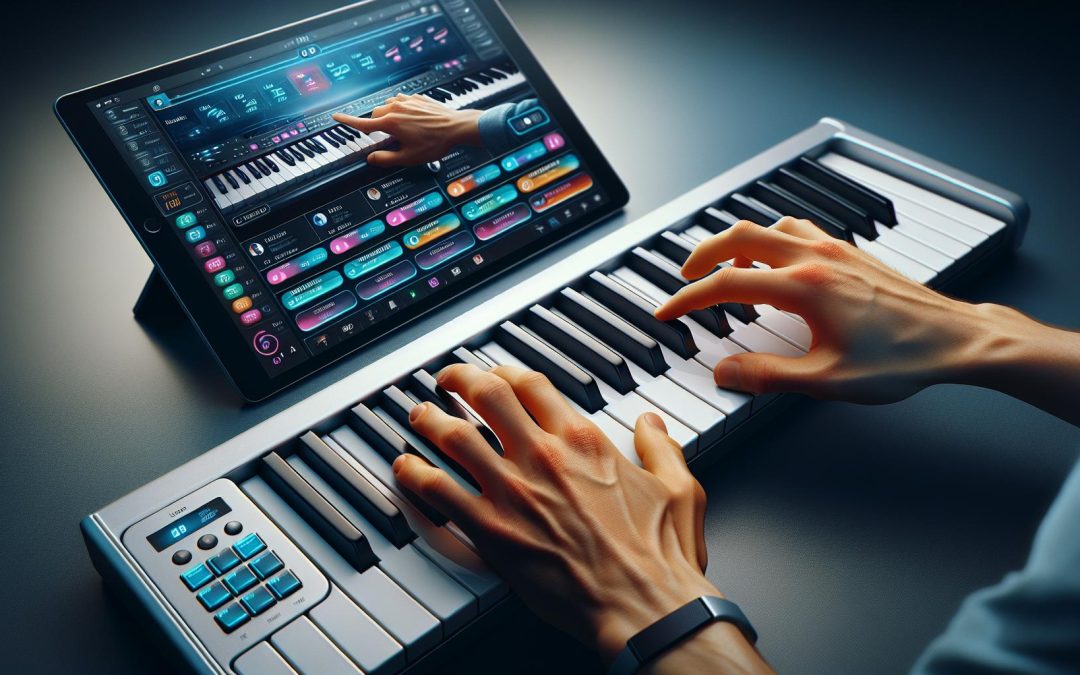In today's digital age, learning to play the keyboard has never been easier, thanks to a plethora of apps that make practice fun and effective. But to get the most out of these apps, you'll need the right keyboard. It's not just about finding a keyboard; it's about finding your musical companion that grows with you as you embark on your musical journey.
Choosing the best keyboard to learn with an app involves more than just comparing prices and features. It's about compatibility, touch response, and how well it integrates with the learning software to create a seamless, enjoyable learning experience. Whether you're a beginner dreaming of playing your first song or someone looking to brush up on their skills, the right keyboard can make all the difference.
Understanding App Compatibility
When embarking on the journey of learning the keyboard through an app, it's crucial to get to grips with app compatibility. This isn't just about ensuring the app runs smoothly on your device, but also about how well it integrates with the keyboard itself. For many learners, the seamless interaction between their keyboard and the chosen app is what makes the learning process enjoyable and effective.
Key Factors in Compatibility
- Device Compatibility: First and foremost, the learning app must be compatible with your smartphone, tablet, or computer. Most apps provide a list of supported devices and operating systems on their websites or app store pages.
- MIDI Support: Modern keyboards often feature MIDI (Musical Instrument Digital Interface) connectivity, allowing direct communication with learning apps. This is essential for features like real-time feedback on your playing.
- Bluetooth Connectivity: Some apps and keyboards connect via Bluetooth, offering a wire-free experience. This is particularly useful for learners who prefer a setup with minimal cables.
- Audio Interface: For apps that do not support MIDI or Bluetooth, audio recognition through the device’s microphone can be an alternative. However, this setup might be less accurate in terms of timing and note recognition.
Choosing the Right App
Selecting an app that complements your keyboard can elevate your learning. Here are a few popular apps known for their broad compatibility:
- Simply Piano by JoyTunes: Recognizes MIDI and audio input, making it versatile for most keyboards.
- Yousician: Offers a wide range of compatibility with both MIDI and audio input, across various devices.
- Flowkey: Known for its user-friendly interface and ability to work well with MIDI keyboards.
By understanding the nuances of app compatibility, learners can make informed decisions about their setup. It's not just about what the app can teach you, but also how effortlessly it integrates with your hardware. This symbiosis between your keyboard and app is what will truly accelerate your learning curve, making each practice session something to look forward to.
Remember, the goal is to find a setup that feels intuitive. With the right combinations, the technology fades into the background, letting the joy of music take center stage. Experiment with different keyboards and apps to discover what works best for you. Sometimes, the most compatible option isn't the most obvious one, but finding it can make all the difference in your musical journey.
Importance of Touch Response

When selecting the best keyboard to complement app-based learning, touch response stands out as a critical feature. It's not just about pressing keys; it's about feeling the music and how it resonates with each touch. Keyboards with good touch response can mimic the action and feel of an acoustic piano, offering learners a more authentic and enriching experience.
Touch-sensitive keyboards respond to the force applied to the keys. This means the volume and the tone can change depending on how softly or strongly a note is played. For beginners, this is invaluable. It teaches them dynamics and expression from the start, essential skills for any aspiring musician. Without touch sensitivity, students might not develop a subtle but crucial aspect of musical expression.
Consider the learning environment keyboards with touch response create. They allow beginners to explore their musicality, encouraging a more interactive and engaging practice session. When paired with apps that track progress or provide feedback on dynamics, learners receive a well-rounded educational experience. This synergy between keyboard and app significantly enhances the learning curve, making practice sessions not just about hitting the right notes but about bringing music to life.
Here's a quick look at why touch response is crucial for learning:
- Enhances Expressiveness: Allows learners to experiment with dynamics and articulation.
- Improves Musicality: Encourages a deeper understanding of music, beyond just the notes.
- Interactive Learning: With compatible apps, students can get real-time feedback on their touch sensitivity, making learning interactive and fun.
Moreover, the technology behind touch response has evolved. Many digital keyboards now offer graded hammer action or weighted keys, closely simulating the feel of an acoustic piano. This feature is particularly beneficial for those who wish to transition to or also play on acoustic pianos. It ensures that the skills developed are transferable, making the learning process more efficient and rewarding.
While assessing keyboards for app-based learning, it's essential to remember that not all keyboards are created equal. Some might offer touch sensitivity but lack the nuanced response needed for advanced learning. Hence, researching and testing keyboards before making a purchase decision is recommended. Popular models known for their excellent touch response include the Yamaha P-Series, Roland FP Series, and Casio Privia. These models are often praised not only for their touch response but also for their overall sound quality and durability.
Integrated Learning Software Features

When embarking on the journey of learning a musical instrument through an app, having a keyboard integrated with learning software features becomes a game-changer. Such integration not only enhances the learning experience but also provides learners with the tools they need to progress efficiently and effectively.
First and foremost, integrated learning software often includes a vast library of songs, ranging from classical to contemporary hits. This varied repertoire ensures that learners of all preferences find pieces they are excited to learn. Additionally, it allows for a gradual increase in difficulty, fostering a sense of achievement as learners tackle more complex pieces over time.
Another critical feature is the real-time feedback provided by these systems. As students play, the software analyzes their performance, highlighting areas of accuracy and pinpointing mistakes. This immediate response helps learners correct their errors on the spot, significantly speeding up the learning process. Whether it's a wrong note or a missed rhythm, feedback is key to mastering the instrument.
To facilitate learning, many apps also offer interactive lessons and tutorials. These can range from video demonstrations to step-by-step guides on reading music, positioning hands, and executing techniques. Such resources are invaluable for beginners who are not yet ready to invest in private lessons. They also serve as excellent supplementary material for those already taking lessons.
Let's not overlook the importance of gamification elements within these platforms. By turning practice into a series of games and challenges, learners are more likely to engage consistently and for longer periods. Achievements, leaderboards, and progress tracking add a layer of motivation that traditional practice methods may lack.
Last but not least, compatibility and connectivity with various devices ensure a seamless learning experience. Whether it’s connecting to a smartphone, tablet, or computer, easy integration allows learners to take lessons wherever they go. This flexibility is essential in today’s fast-paced world, where finding time for practice can be challenging.
Popular Learning Platforms
Many keyboards now come with free or discounted access to popular learning software. Below are some platforms that are frequently bundled with keyboards, known for their comprehensive features and user-friendly interfaces:
- Simply Piano
- Yousician
- Flowkey
- Skoove
Each platform has its unique selling points, whether it's the breadth of song libraries, the detail of feedback, or the extent of tutorials offered. It's worth exploring these options to see which aligns best with individual learning styles and goals.
Choosing the Right Keyboard for Your Skill Level

When embarking on the journey of learning to play the keyboard with an app, one of the pivotal decisions revolves around selecting an instrument that resonates with the learner's current skill level and future aspirations. This decision can significantly influence the ease with which a learner progresses, as well as their overall engagement and enjoyment of the process.
For Beginners
Beginners should look for keyboards that are user-friendly and equipped with features catered to facilitate a smooth learning curve. Typically, a 61-key keyboard is considered sufficient to start with, as it offers enough range for learners to explore various musical genres without feeling overwhelmed. Key features they might consider include:
- Touch-sensitive keys: to emulate the feel of an acoustic piano, enhancing dynamic control and expressiveness.
- Built-in learning aids: like light-up keys and step-by-step lessons that guide learners through the basics.
- Connectivity: ensuring the keyboard can easily interface with various apps and software for an integrated learning experience.
For Intermediate Learners
For those who've surpassed the beginner's hurdle, finding a keyboard that challenges their growing skillset without stifacing creativity is crucial. An ideal choice might be a 76-key keyboard, bridging the gap between beginner and full-scale models. Important features for intermediate players include:
- Weighted or semi-weighted keys: for a more realistic feel, encouraging proper finger technique and strength.
- A wider range of voices and rhythms: to experiment with different sounds and styles, fostering musical exploration and versatility.
- Recording and playback capabilities: allowing learners to listen back to their performances, which is invaluable for self-assessment and improvement.
For Advanced Players
Advanced players typically seek out keyboards that offer the full 88-keys, mimicking a traditional piano layout, and providing the capability to play a more extensive repertoire of music. For learners at this level, the focus shifts towards:
- Fully weighted hammer action keys: delivering a true piano touch, necessary for advanced expression and dynamics.
- High-quality sound samples: that offer a rich and authentic listening experience, essential for nuanced performances.
- Connectivity for advanced software: giving users the ability to explore complex compositions, record multi-track pieces, and refine their mastery with access to a broader range of learning and composition tools.
Conclusion
Choosing the right keyboard for app-based learning isn't just about the price or the brand. It's about matching the instrument to the learner's current skill level and where they hope to go on their musical journey. Whether it's a beginner needing a 61-key keyboard to start off, an intermediate player stepping up with a 76-key, or an advanced musician requiring the full range of an 88-key, there's a perfect fit out there. Remember, the right keyboard can make learning not just more effective but also a lot more enjoyable. So take the time to choose wisely and let the music begin!
Harlan Kilstein began playing piano during covid with no piano background at all. He taught himself how to play learning what to do and what not to do.
Today he's an advanced intermediate player and can help you grow in your skills because he learned all this on his own.








